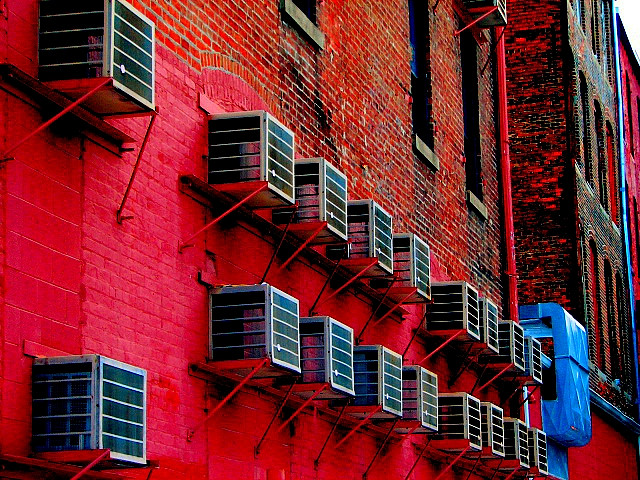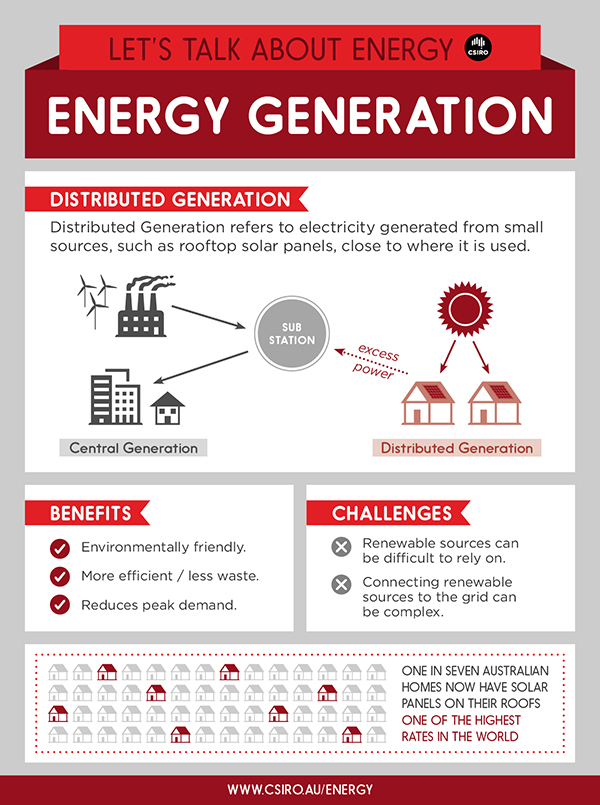
Air con. Ugly on the outside, so wonderful on the inside. Image: Flickr / Jan Tik
When many Aussies woke up this morning they probably didn’t want to get out of bed. That is, they didn’t want to leave the comfort of their air conditioned homes.
The mercury is already on the rise and tipped to reach sweltering highs- Melbourne 41°, Adelaide 45°, Canberra 40°.
Over the next few days the system that delivers our electricity, the grid, will be put under enormous strain. The grid basically refers to the infrastructure and companies that generate electricity and deliver it to your door. It may sound straightforward but for the few days of the year when peak demand kicks in, the pressure on the grid can be problematic. With a heat wave moving across most of Australia these next few days, many of the 75 per cent of households with air conditioners will switch them on today. That alone will about double the average electricity demand.
So what, you say? I pay my electricity bills. Well this is where it gets interesting. The peaks and troughs of electricity demand can actually mean higher electricity prices. This is because money is invested into grid infrastructure so that it can handle a peak demand scenario that may or may not happen. So how can we take the load off the grid during these times?
One way is known as cost reflective pricing. This is where the price of electricity is adjusted at different times of the day to encourage people to move their consumption away from peak periods.
Would you reconsider running that load of washing at 8am if you knew it would cost half the price at 2pm?
And that’s not the only change we may see. Already one in seven Australian homes has solar panels on its roof, giving us one of the highest rates of distributed generation of electricity in the world. Some of the electricity generated on these roofs is put back into the grid for redistribution, taking some pressure off grid infrastructure.
But wait, there’s more. There’s Opticool – smart software developed by us and commercialised by Building IQ that monitors and adjusts conditions in a building based on live data (like weather and personal comfort levels). This clever technology has reduced energy consumption at New York’s Rockefeller Centre by about 12 per cent and, more impressively, reduced the building’s peak energy demand by nearly 30 per cent. Imagine never having to complain about your office temperature ever again.
Cost reflective pricing, distributed generation and intelligent buildings – all of them possibilities for our electricity future. As to the heat wave that’s on our door step, well, we’ll just have to rely on the poor old electricity grid.
Now pass me that air con remote.




24th August 2016 at 2:24 am
Solar air conditioner is a great technology.It reduce electricity bills.Australian people worthy use more solar air conditioner then we see result power grid of electricity .
4th February 2014 at 4:32 pm
So an important part of putting solar into a residential building is getting the size right – big enough that it makes a significant dent in the peak flow to the building but not so big that it could actually stress parts of the network when there is little or no load on the premises and it is feeding back into the grid. Pricing, including payment for energy fed back into the grid needs to be aimed at smoothing both the troughs and the peaks. I could envisage a situation mid-morning where the sun is shining brightly, the houses are empty and air conditioners are off and everyone has peak generation and low consumption at the same time – transferring this to where it could be used (commercial premises, schools etc.) could still increase infrastructure requirement
4th February 2014 at 2:56 pm
If all those with electricity guzzling Air conditioners were made to install solar panels then demend would be reduced. This would also more accurately reflect the real cost of air con. We are devloping a society of individuals who can only function at 22 degress. Humans tolerated a much wider temperature range before air conditioning!
15th January 2014 at 11:44 am
I’d argue that solar panels put the same pressure on grid infrastructure as an airconditioner does – it doesn’t matter which way the electrons are running, the local part of the grid still has to carry an extra 1.5 kW. But you’re correct in that they do reduce the net demand at some times of day (when they are generating *and* when power is being consumed in their tiny part of the grid), so that the grid over a large area does have less pressure on it.
16th January 2014 at 1:13 am
but is said house with air conditioning also has solar, then the demand of drawing is reduced either way.. this is my understanding..